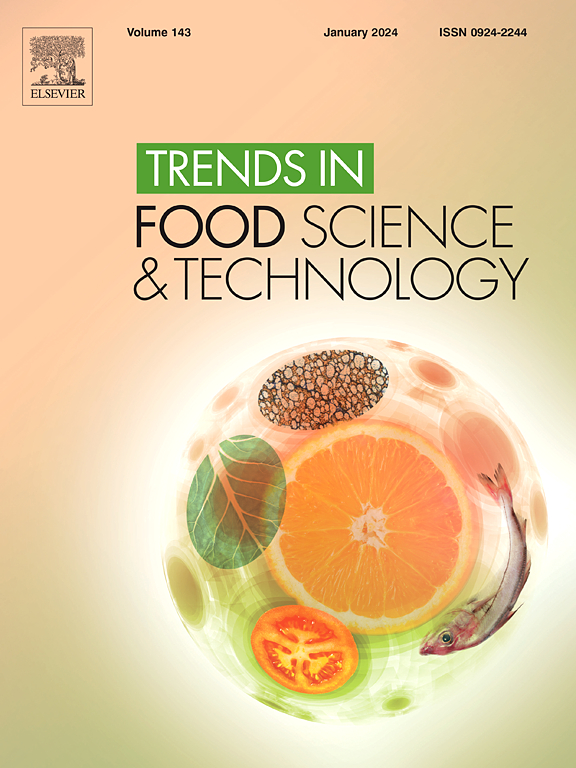Evaluating the nutritional value of functional molecules for food processing using tissue and organoid models
IF 15.1
1区 农林科学
Q1 FOOD SCIENCE & TECHNOLOGY
引用次数: 0
Abstract
Background
The fast-expanding global population, coupled with the threat of climate change, have led to fresh challenges in meeting nutritional security. As a response to this challenge, there is increasing activity in future food research and production. Methods are required to evaluate these new foods and the functional molecules used in their processing, in an efficient yet accurate manner. This article discusses the various classes of food molecules used in food processing, i.e. the stabilisers, colouring agents, flavour molecules and crosslinkers, their known nutritional effects and how they can be evaluated using in vitro models.
Scope and approach
The emerging technology of tissue and organoid models is presented as a potentially more accurate method for nutrient evaluation than in vitro assays, or assays based on 2D cell culture. The current article catalogues the variety of functional molecules that are used in food processing and reviews their general effects on human health. Some of the current methods used to evaluate these effects are presented and their limitations discussed.
Key findings and conclusions
To accurately evaluate nutrient effects, potential configurations of tissue and organoid models are proposed based on a primary (intestinal) organoid to secondary organoid sequence, with examples from each class of functional molecule. Examination of the related literature suggests the usefulness of organoid models to evaluate the nutritional effect of functional molecules on various organs and disease conditions. Approaches towards engineering and validating stable and robust organoid models, and their combination with other technologies, underline their promising role in nutritional evaluation.
求助全文
约1分钟内获得全文
求助全文
来源期刊

Trends in Food Science & Technology
工程技术-食品科技
CiteScore
32.50
自引率
2.60%
发文量
322
审稿时长
37 days
期刊介绍:
Trends in Food Science & Technology is a prestigious international journal that specializes in peer-reviewed articles covering the latest advancements in technology, food science, and human nutrition. It serves as a bridge between specialized primary journals and general trade magazines, providing readable and scientifically rigorous reviews and commentaries on current research developments and their potential applications in the food industry.
Unlike traditional journals, Trends in Food Science & Technology does not publish original research papers. Instead, it focuses on critical and comprehensive reviews to offer valuable insights for professionals in the field. By bringing together cutting-edge research and industry applications, this journal plays a vital role in disseminating knowledge and facilitating advancements in the food science and technology sector.
 求助内容:
求助内容: 应助结果提醒方式:
应助结果提醒方式:


